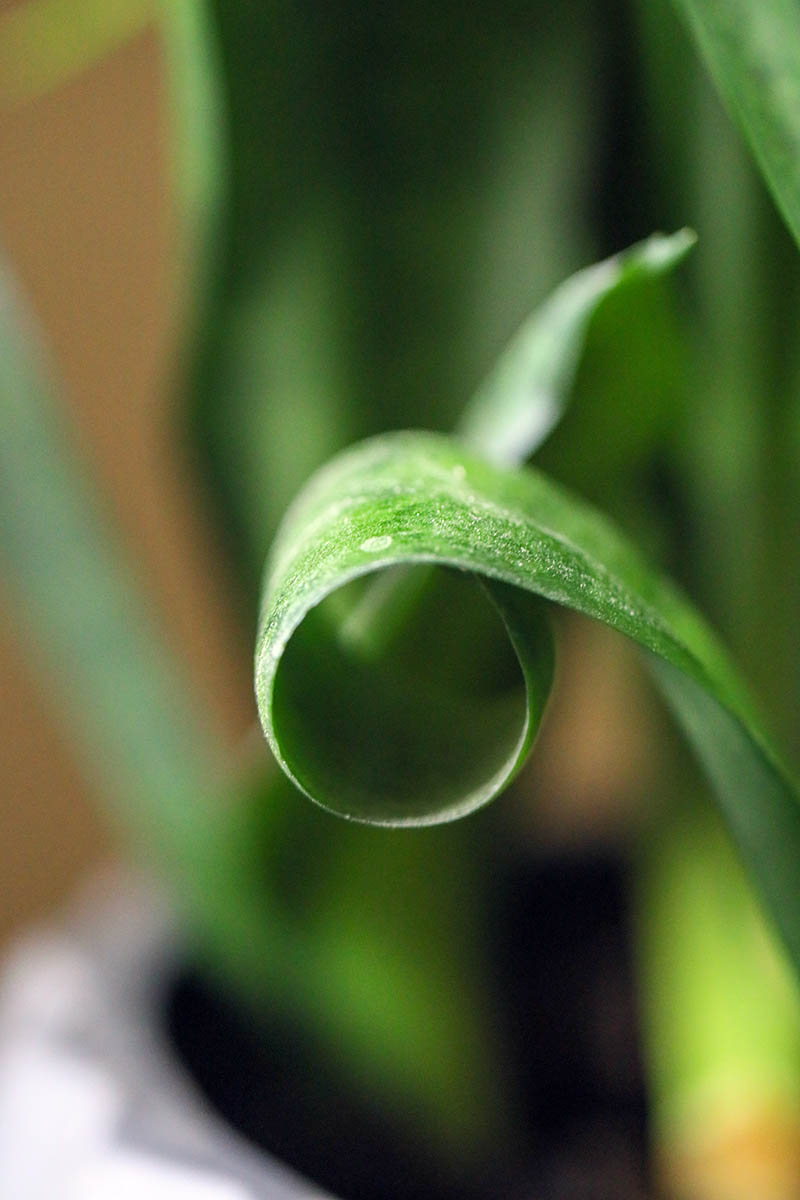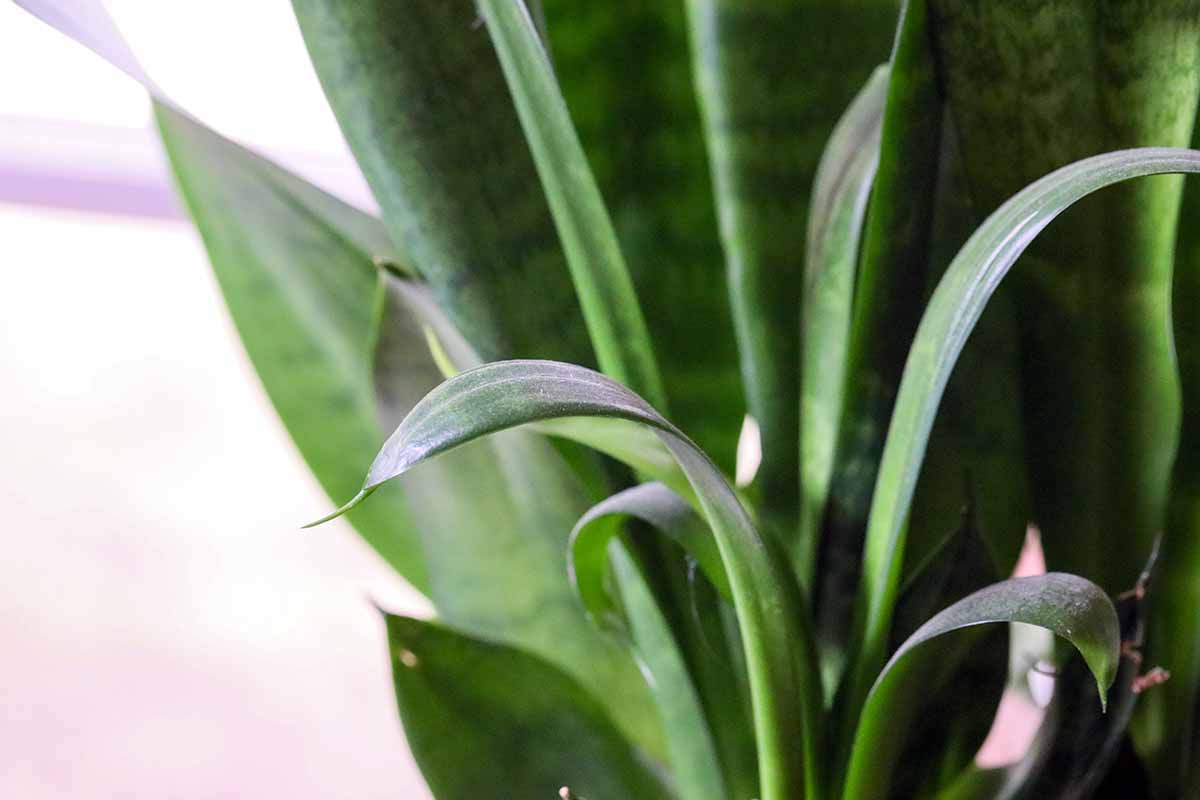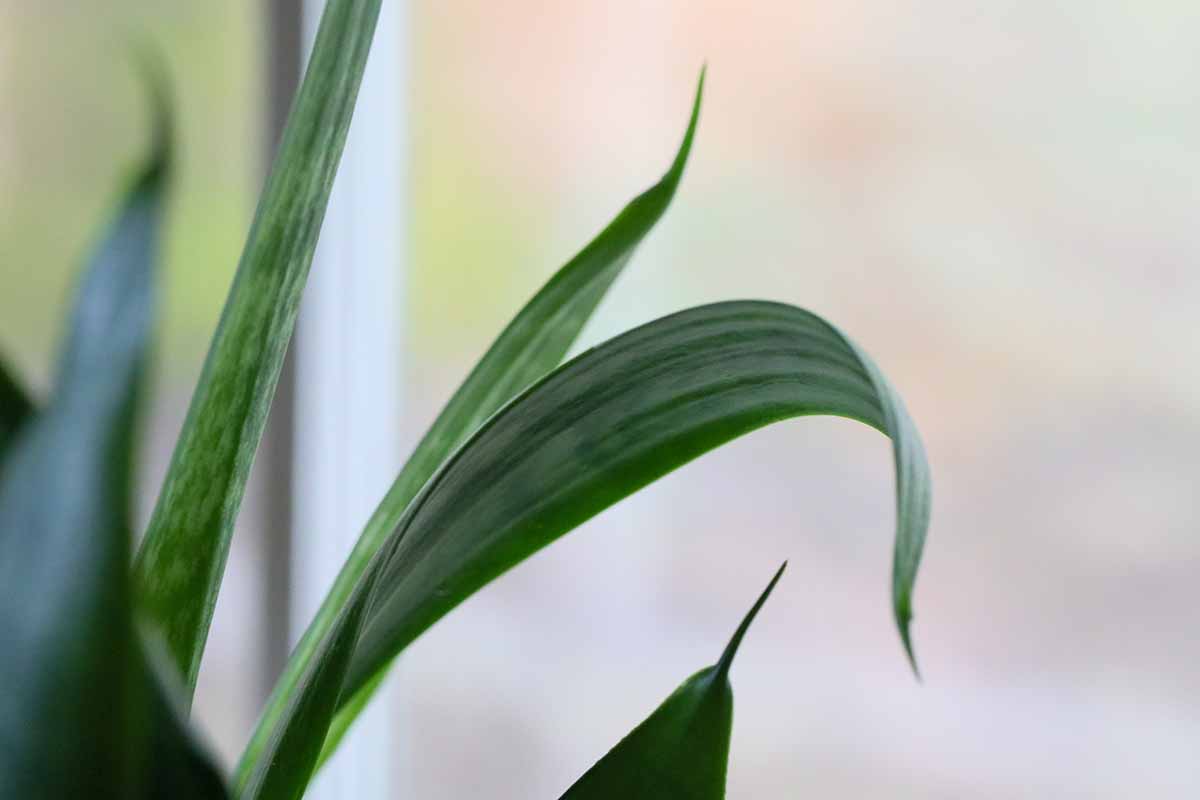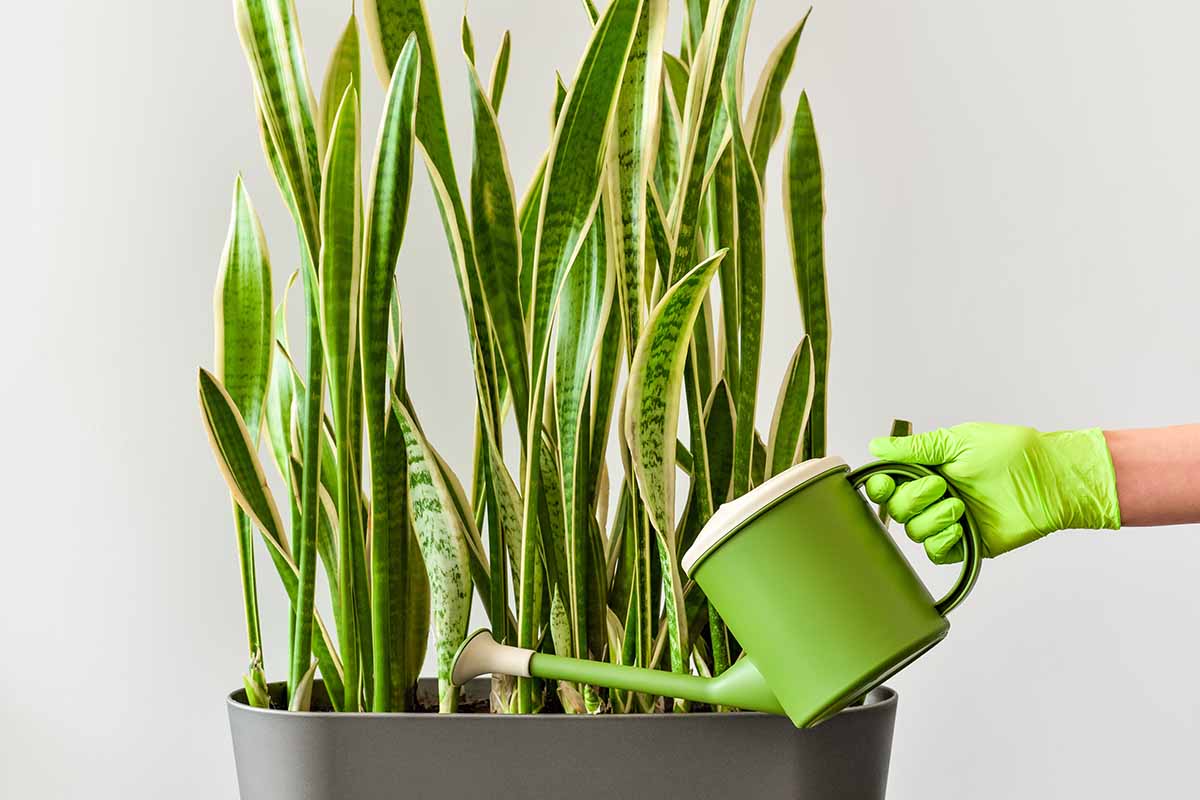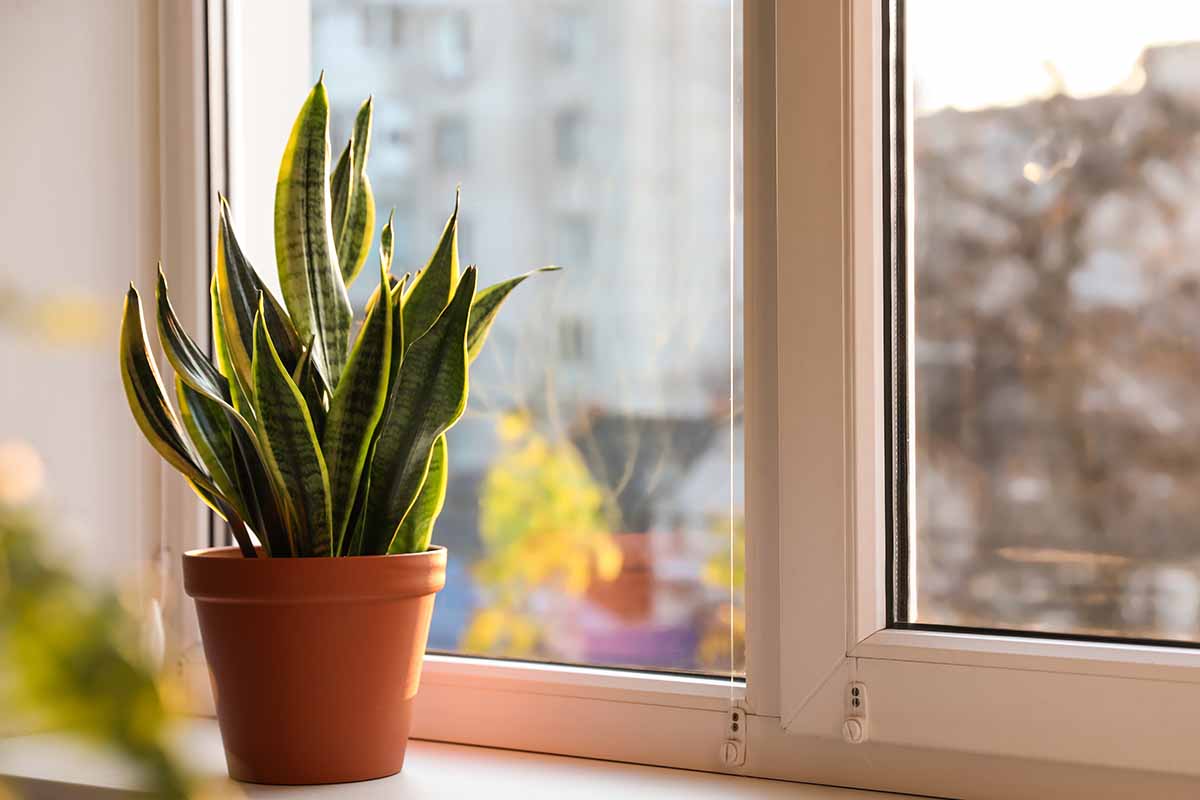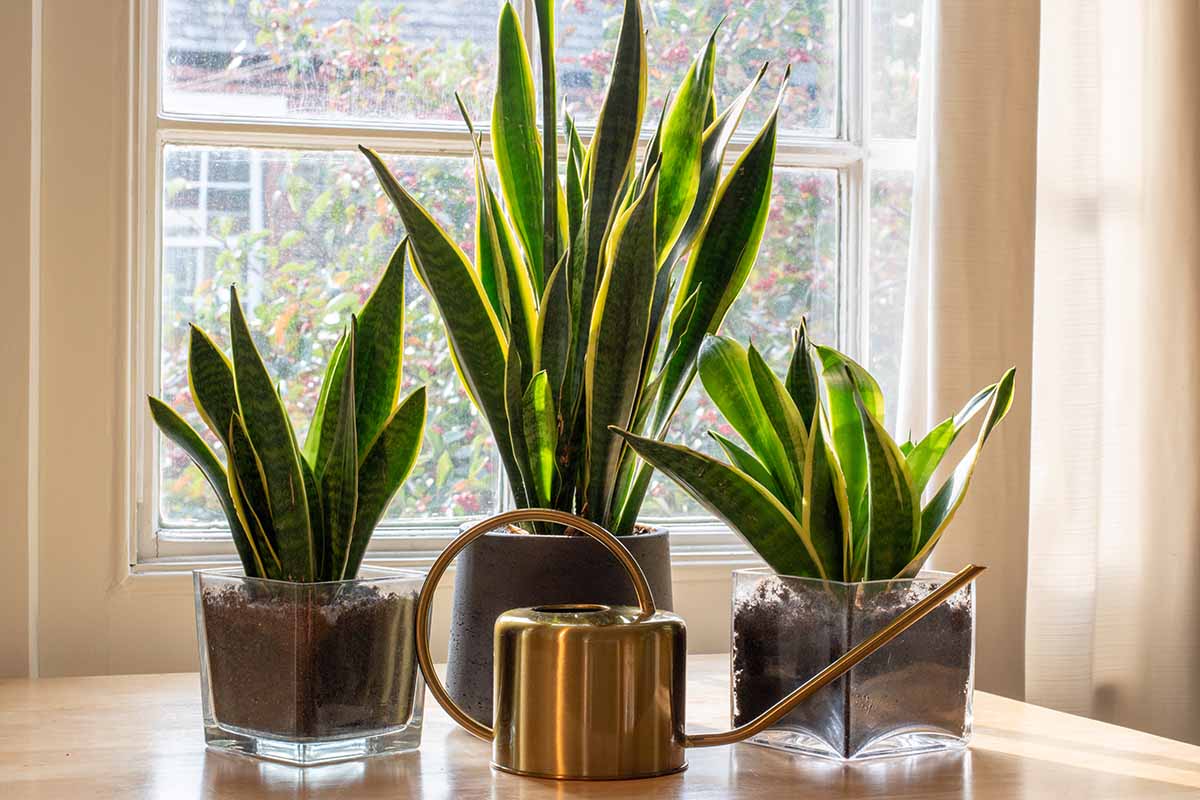Good news! They can speak! Unfortunately, they only speak plant and most of us aren’t fluent… When the foliage on your snake plant starts to curl, it is trying to tell you that something is wrong. We link to vendors to help you find relevant products. If you buy from one of our links, we may earn a commission. In this guide, we’ll interpret the message when those leaves start to curl, and translate it so proactive gardeners can make the necessary fixes. Here’s everything we’re going to talk about: Curling snake plant leaves are usually related to water issues, but there are other things that can cause this to happen as well. Let’s examine the top five common causes, and solutions to help your plants thrive. Also be sure to note, just in case your snake plant is new to you – there are actually certain species and cultivars that naturally have tube-shaped or wavy foliage. In these special cases, this is not a sign of poor health!
1. Cold Damage
One year, I lived in an extremely cold house. No matter what I did, I couldn’t raise the temperature enough. Space heaters, additional insulation, jacking up the thermostat – it didn’t matter. I could wrap myself in heated blankets and sweaters, but my houseplants weren’t so lucky. They suffered. And my snake plants showed their displeasure by curling. Snake plants like it hot. While they can tolerate temperatures down to about 55°F, they prefer something closer to 70°F at a minimum. If you keep them in an area where the temperature drops below that, new growth will tend to curl. Older leaves will remain upright, but any young leaves that emerge will gradually curl over. So long as you’re able to keep the plant alive in these conditions, it will recover once it’s moved to a more stable environment with more appropriate temperatures. But those young leaves that developed in the cold? They’re going to stay curled permanently. But it’s alright – this just adds to it’s character, right?
2. Not Enough Water
When snake plants become dehydrated, they curl. If you aren’t providing enough water, you’ll start to see curled foliage with brown edges. Before you go dumping in more water, check the soil first. More often than not, Sansevieria species (okay, fine, species of Dracaena, as they are now classified) are overwatered. It’s easy to give them more than what they need. If you were to stick your finger into the soil, it should feel dry before you water again. If it feels moist at all, even a few inches down, leave it. However, if you feel the soil and it’s totally dry and you can’t remember the last time you watered, it’s probably time to water again! Once you add moisture, the leaves should slowly straighten up from their wilted state. If your specimen recovers after a little hydration therapy, remember not to wait so long next time between watering and you won’t see this problem again.
3. Too Much Light
This might not seem like a watering issue – but at the end of the day, it is. When snake plants are exposed to too much sunlight, they become dehydrated. And remember from before: dehydration results in curling leaves. The solution here isn’t to add more water though, but to move the plant into better light. If your plant is sitting in direct sun, it might not turn brown and crispy like others will, but it will tell you by curling up its foliage in protest. To make your mother-in-law’s tongue totally happy, it needs bright, indirect light without any exposure to direct sun. A north-facing window, or a south- or west-facing window with sheer curtains placed over it, is going to be perfect.
4. Thrips
Thrips, insects in the order Thysanoptera, will attack all kinds of houseplants. While infestations aren’t common on snake plants, if you do have a pest infestation, it’s likely to be a thrips problem. These pests are known for causing deformed, curled foliage. If that’s what you’re seeing and the light exposure, temperature, and moisture level seem right, thrips should be your next consideration. These tiny, narrow insects can be hard to identify because they like to hide. They’re only a millimeter long, so look closely for itty-bitty cigar-shaped pests scuttling about on the leaves. Unfortunately, by the time you see symptoms there’s a chance the pests have already moved on to other hosts, leaving you scratching your head. While this infection can be devastating, the pathogens that cause it can only be transferred on plant material, water, or contaminated tools. If you’re diligent about hygiene, it’s unlikely that you’ll ever see this problem. Spray the leaves once every two weeks for up to two months, until the infestation clears up. Bonide Neem Oil Don’t have any neem oil on hand? You can grab some at Arbico Organics in quart- or gallon-size ready-to-use bottles, or pints of concentrate to mix with water.
5. Southern Blight
Of all the problems on this list that might cause curled leaves, southern blight is the least likely to occur. Make sure to check for everything else described here first! Southern blight is caused by the fungus Sclerotium rolfsii. But if you don’t clean your tools on the other hand, or reuse pots without cleaning them first, it might be an issue. If you see curled leaves, look closer. After eliminating everything else on this list, look for white fungal threads on the soil surface. The foliage might also rapidly turn yellow and droopy. If you spot these symptoms, toss your plants and sanitize your pots. There isn’t a known chemical or biological cure that gardeners can turn to, and you don’t want to spread the disease any further. It’s a sign that your mother-in-law’s tongue isn’t feeling its best. Consider this symptom as something akin to when you have a fever. Your body is warning you that something is wrong – and you need to figure out what’s wrong to work towards a solution. Figure that out, and your plant will be feeling as good as new in no time. The leaves might not straighten out once they’ve curled, but it’s no big deal. New leaves should look as good as ever once conditions improve. Which of these issues was causing your plant’s woes and how did you decide to fix it? Share your experience with the gardening community in the comments. Once you’ve solved the mystery of the curled leaves (the latest Nancy Drew novel?), you might be looking for other ideas to keep your snake plants healthy and happy, or you’re eager to learn more about your lovely friends. Here are a few guides to check out next:
How to Grow and Care for Snake PlantsHow to Encourage Indoor Snake Plants to BloomHow to Propagate Snake Plants

